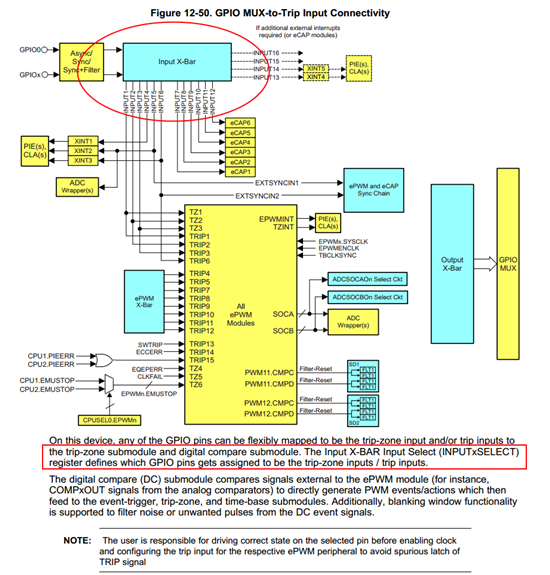At the TMS320F28377D there exist in contrary to the Piccolos no dedicated trip zone inputs. In the manual the input x-bar is mentioned. Is the external trip no possible with all GPIO lines? Please give me a a small example code what I have to to stop EPWM1A by an external trip exent on a GPIO. The information in the datasheet is not detailed enough and there is no example in controlsuite. I can test it on my TMDSCNCD28377D control card with the epwm_updown_aq_cpu01 example of the controlsuite!
-
Ask a related question
What is a related question?A related question is a question created from another question. When the related question is created, it will be automatically linked to the original question.







